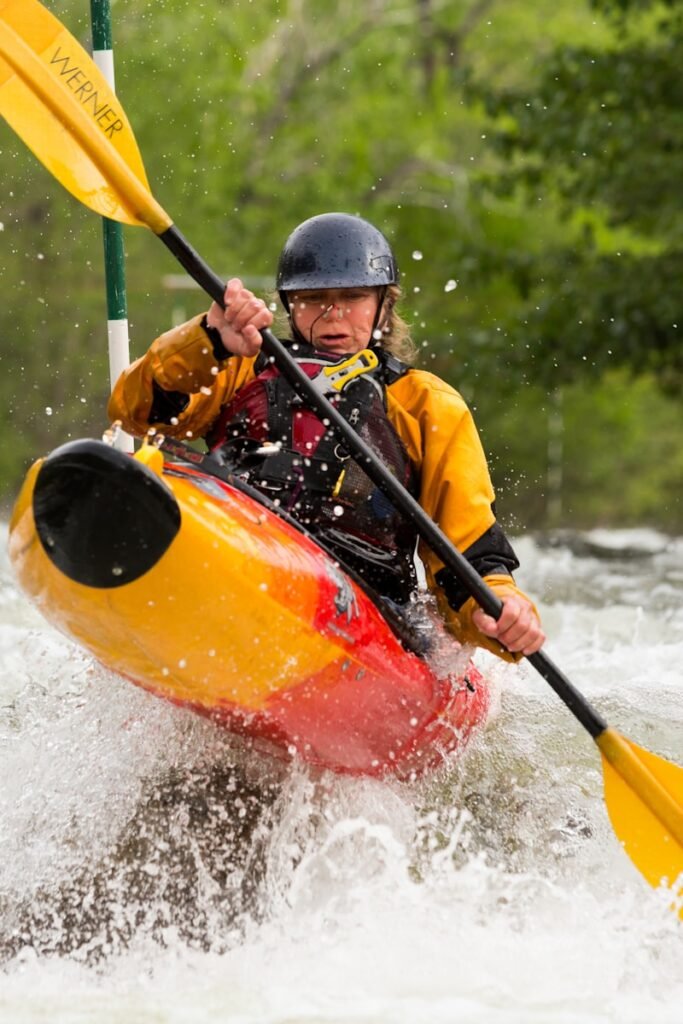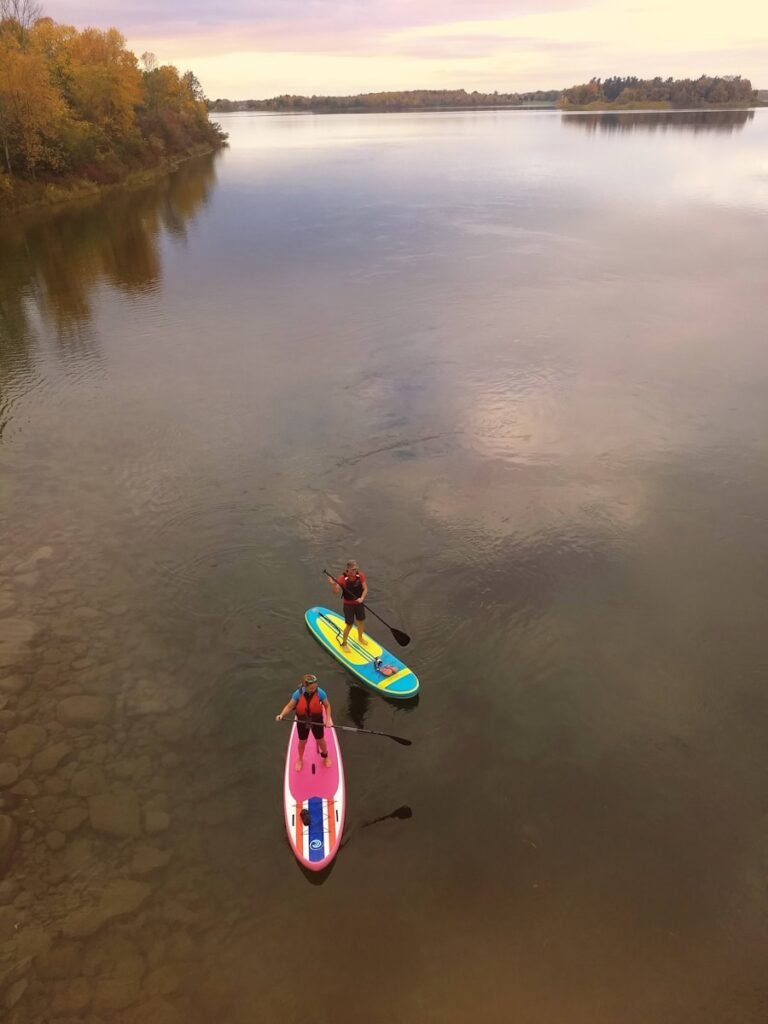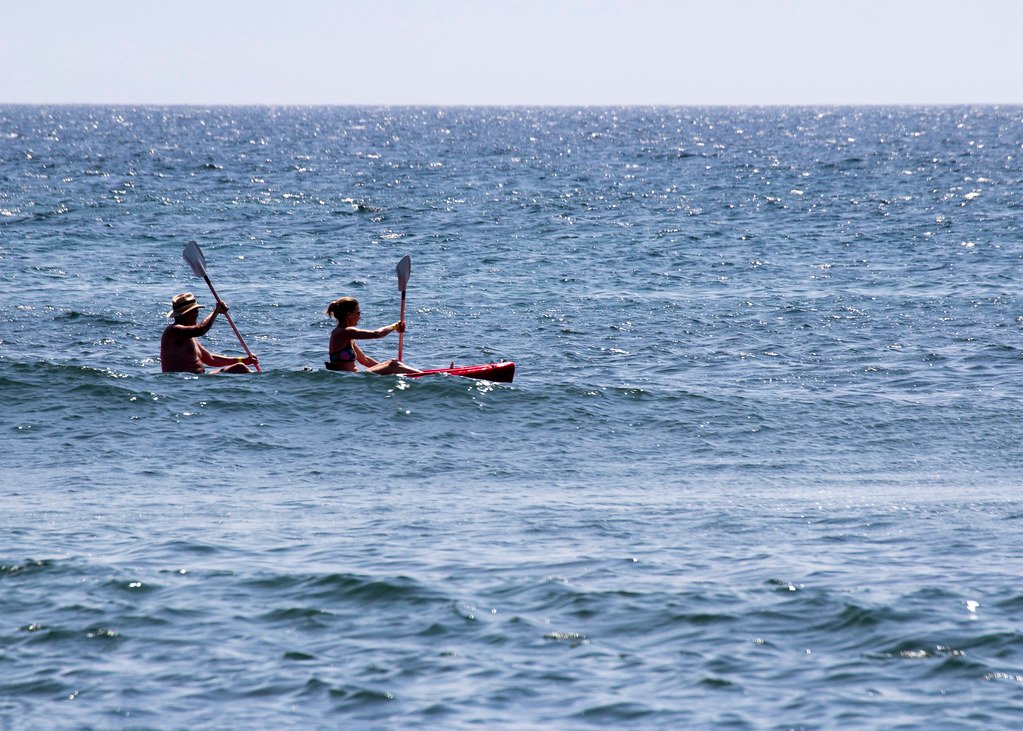Ready to paddle your way into a new adventure? Wondering if you can go solo in a two-person kayak? You’re not alone! Many kayaking enthusiasts find themselves pondering the same question.
Yes, absolutely! A single person can indeed use a two-person kayak. While it’s designed for duo paddling, with just minor adjustments and the right technique, one person can handle it smoothly.
Curious about how this works? Stick around as we dive deeper into the details of maneuvering a two-person kayak on your own. Trust us; it’s simpler than you might think! Let’s paddle onward and get all your questions answered.

Can You Paddle Solo in a Two-Person Kayak?
Yes, you certainly can paddle solo in a two-person kayak. However, it requires strategic positioning, balance and technique to manage the kayak’s extra weight and length. Proper understanding of these elements can make your solo paddling experience enjoyable and safe.
Paddler Positioning
When paddling alone in a tandem kayak, it is important to situate yourself correctly. Your position should ideally be at the back seat as this allows for easier control over steering and maneuverability. The front of the boat might lift slightly due to uneven weight distribution but this shouldn’t affect your journey significantly if managed well.
Managing Balance
Balance plays an essential role when kayaking solo on a two-seater. To maintain equilibrium during your expedition, consider placing some gear or weights in the empty seat. This will help stabilize the kayak by counterbalancing your weight.
Effective Paddling Technique
Applying effective paddling techniques allows you to navigate efficiently despite being alone on a larger vessel. Utilize wider strokes while keeping your paddle close to the boat which ensures optimal propulsion with less effort.
In conclusion, while challenging at times, solo paddling on a double seater is feasible with proper knowledge and practice. It opens up new possibilities for exploration without needing another person present all times.
The Benefits of Using a Tandem Kayak Alone

Using a tandem kayak alone offers an array of benefits that might surprise you. Contrary to popular belief, these two-seater water vessels are not just for pairs; they can be efficiently maneuvered by solo paddlers as well. Let’s dig deeper into why you should consider going solo on a tandem kayak.
1. Ample Space
A tandem kayak provides abundant room compared to a single seater. The extra space can be utilized for storing gear, food supplies or even your furry friend! Thus, making it ideal for long trips or overnight camping excursions.
2. Better Stability and Balance
Tandem kayaks boast superior stability due to their longer length and broader width. This makes them less likely to capsize in rough waters or strong winds, providing safer navigation especially when you’re out there on your own.
3. Enhanced Speed and Efficiency
Despite the common perception that larger kayaks are harder to paddle, the truth is quite the opposite! With its sleek design and extended hull length, a tandem kayak allows solo paddlers to cover greater distances with fewer strokes – saving energy while increasing speed.
Challenges One Might Face When Kayaking Alone in a Double Kayak
Opting to kayak alone in a double kayak can present unique challenges. While the idea may seem appealing, it’s essential to recognize potential hurdles and prepare accordingly. Let’s dig deeper into some of these obstacles.
Maintaining Control and Stability
A significant challenge is managing control and stability. A double kayak is designed for two paddlers, so when you’re solo, controlling direction becomes difficult. The extra weight at one end can result in instability, making capsizing more likely.
Paddling Efficiency
The next hurdle that presents itself is paddling efficiency. With only one person paddling instead of two, the effort required increases significantly which could lead to quicker exhaustion.
Emergency Handling
In case of an emergency or sudden harsh weather conditions, handling a double kayak single-handedly can be extremely challenging due to its size and weight compared to a single kayak.
Navigating these Challenges
Kayaking alone in a double canoe doesn’t have to be daunting if you are well-prepared. Here are some ways to navigate through these challenges:
- Balancing Weight: To maintain stability, balance your weight evenly across the boat by placing gear on the empty seat or use ballast bags filled with water.
- Pace Yourself: To avoid rapid exhaustion from increased effort needed for propulsion, ensure you pace yourself during your journey.
- Safety Measures: Always carry safety equipment like life jackets and emergency communication devices while kayaking alone as they could prove vital during emergencies.
Safety Measures to Consider While Using a Two Person Kayak Alone

Venturing out on the water in a two-person kayak alone can be quite an adventure. However, your safety should always remain paramount. Here are some vital safety measures that you need to consider while using a two-person kayak by yourself.
1. Position Yourself Correctly
When kayaking alone in a two-seater, positioning is key to maintaining balance and control. Situate yourself at the back seat rather than upfront for better maneuverability.
2. Adjust The Load
A balanced load distribution enhances stability when paddling solo in a double kayak. Ensure any gear or equipment is evenly distributed throughout the boat.
3. Wear A Life Jacket
Never underestimate the importance of wearing a life jacket, regardless of your swimming ability or familiarity with watersports – it’s non-negotiable!
4. Check Weather Conditions
Always check weather conditions before heading out onto open waters as they can change rapidly and could potentially put you at risk.
Now, let’s dig deeper into other crucial aspects related to solo kayaking in tandem vessels.
Mastery Over Paddling Techniques
Paddling techniques differ when you’re handling a larger vessel like a two-person kayak alone. Hence, practice different strokes and maneuvers until you feel confident about navigating waterways independently.
Towing Line Is Essential
Keep a towing line handy if required for emergency use; this simple tool can prove invaluable during challenging situations such as fatigue or strong currents.
Tips and Techniques for Effectively Maneuvering a Two-Person Kayak Solo
Navigating a two-person kayak solo may seem like a daunting task, but with the right techniques, it can be accomplished smoothly. The key lies in understanding the dynamics of the kayak and knowing how to adjust your own movements accordingly. Let’s dig deeper into some strategies that will aid you in mastering this skill.
Position Yourself Correctly
For effective maneuvering, positioning yourself in the center of the kayak is paramount. This balance point provides better control over the vessel’s direction and pace. Adjust your seat or sit on an additional cushion if needed to ensure you’re centrally aligned.
Master Your Paddling Technique
Paddling correctly is crucial when controlling a two-person kayak alone. Use wider strokes on one side to turn towards that direction without changing your seating position frequently. Practicing different paddle strokes will increase efficiency while reducing fatigue.
Use Rudder or Skeg
A rudder or skeg can significantly improve steering when paddling solo in a tandem kayak. By adjusting these devices, you can easily compensate for wind or current drifts making navigation easier.
Lighten Your Load
Keeping gear at minimal levels helps maintain stability during solo trips on a two-person kayak. Place heavier items closer to your seating area for better weight distribution.
The following aspects may help you make your kayaking experience more enjoyable:
- Maintain Balance: Always try to keep your weight centered and balanced.
- Familiarize Yourself With Weather Conditions: Understanding weather patterns assists in pre-empting potential challenges.
- Safety Measures: Equip yourself with safety gear including life jacket, whistle, first aid kit etc.
FAQs
Is it possible for a single individual to maneuver a two-seater kayak?
Yes, it’s quite possible. However, the kayak may be more difficult to steer due to its length and weight distribution.
Does using a tandem kayak alone affect its stability?
Not necessarily. The boat’s stability might be influenced by where you position yourself and your gear, but generally speaking, one person can safely use a two-person kayak.
What are some considerations when solo kayaking in a tandem model?
You’ll need to consider factors like weight distribution and seating position. It’s typically best to sit in the back seat when paddling alone as this can make steering easier.
Are there any disadvantages of operating a double kayak solo?
While it is doable, paddling a double kayak alone could be more challenging due to its size and weight. It may also be less efficient than using an appropriately sized single-person kayak.
